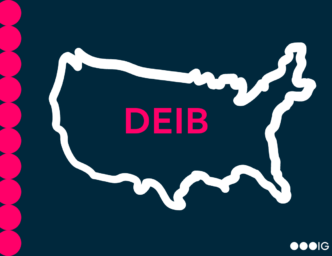Parental leave makes it possible for new parents to enjoy the exciting time of welcoming a new child into their families. It allows them to take a break from their job, bond with their child, and establish a new routine for their family. And for any parents who have just given birth, parental leave gives them time to recover physically. By providing employees with a clear parental leave policy, you can give them the support they need to balance their careers and families.
Expectations around parental leave have undergone major changes as more employers acknowledge diverse family structures. In the modern workplace, an inclusive parental leave policy is a critical part of a positive company culture.
Keep reading to learn more about how to create an inclusive parental leave policy.
Why Is Parental Leave Important?
Parental leave makes it easier for people to have a fulfilling family life without being worried about their career progression or job security. Offering parental leave helps employees make long-term plans about their careers and families, boosting morale and creating a supportive company culture.
Your parental leave policy can also impact your ability to recruit and retain employees. Many employees look for companies that have supportive parental leave policies, and they may pursue other options if their current employer doesn’t provide them with enough leave. Ultimately, creating an inclusive parental policy shows employees that you respect their personal lives while encouraging them to grow at your company.
Parental leave isn’t just an attractive perk for employees. It’s also a federally protected right in many cases. The Family and Medical Leave Act (FMLA) entitles eligible employees to take up to 12 weeks of unpaid leave for the birth or adoption of a child. This allows people to grow their families while still holding onto their jobs. To qualify for FMLA, employees must have worked at their employer for at least 12 months. FMLA only applies to companies that employ 50 or more people. Businesses with fewer than 50 employees can still choose to offer parental leave to their employees, and all employers can choose to offer paid leave.
How to Build an Inclusive Parental Leave Policy
Consider differing employee needs when creating or updating a parental leave policy. To prioritize equity and inclusion, use these best practices as a guide:
Include Different Family Structures
Under FMLA, any parent can take time off to care for their new child. Covered situations include the birth of a child, adoption, or placement from foster care.
It’s important to design a policy that allows parents of any gender to take time off when their family grows. This empowers all parents to be involved with their new children, even if they aren’t the primary caregiver or they didn’t personally give birth.
When writing your policy, be clear that it applies to any employee welcoming a new child, regardless of their family structure.
Make Parental Leave Accessible
FMLA requires people to have worked for their employer for a year to qualify. However, offering parental leave to employees with a shorter tenure can make a big difference in your company’s culture. A flexible parental leave policy shows that you’re focused on employees’ long-term future with your company.
It’s also important to actively encourage employees to utilize their parental leave benefits. Some employees may opt not to take parental leave because they don’t want to fall behind or miss out on career opportunities. Be clear that you want employees to take parental leave so they can avoid burnout and enjoy a healthy work-life balance. Remember to provide fair career opportunities for new parents upon their return to work.
Develop a Transition Plan
A clear parental leave transition plan helps employees feel confident in taking time off. As part of your parental leave policy, set guidelines for creating transition periods both before and after employees take leave.
Consider how you’ll reallocate their responsibilities during their leave and how you’ll get them back up to speed when they come back to work. Being prepared for the transition can provide employees with peace of mind while they’re on leave while also allowing for a seamless return to work.
Consider Offering Childcare Support
Most parental leave policies offer a certain amount of time off, whether that’s paid or unpaid. However, you can also include other perks designed to support working parents. Assess your budget to determine if you can offer any sort of childcare assistance in your benefits package. Childcare support can include credits to pay for daycare, in-office childcare support, or other dependent care assistance. This can further assist with the transition back to work.
Provide Flexible Work Options
Even if months of paid leave and childcare support aren’t in your budget, you can still design a competitive parental leave plan. Consider offering flexible hours or a hybrid schedule to new parents to support their new familial obligations. Flexible work options can help employees remain engaged at work while still having extra time and energy to dedicate to their families.
Use Gender Neutral Language
The way you discuss your parental leave policy is just as important as its content. Be intentional with the language you use in your official policy to prioritize inclusion. Use gender-neutral language, such as “parent” or “guardian” instead of “mother” or “father.” Directly state that your parental leave plan includes various family planning options to avoid any confusion about eligibility requirements.
Know Your Competition
As you consider how to build your parental leave policy, it is helpful to know what other employers in your sector are offering. You don’t necessarily have to exceed or even match what your competitors offer, but if you fall far below the market standard, you may find that this becomes a sticking point when trying to attract top level candidates.
Prioritizing Inclusive Parental Leave
Making parental leave available to a wide range of family structures shows respect for all employees in your workplace. By focusing on inclusion when crafting your parental leave plan, you show employees that you value equity in the workplace. When each employee can enjoy the benefits of parental leave as their families expand, you ensure that your company can be a part of their future.
Learn more about the importance of diversity, equity, inclusion, and belonging (DEIB) by watching our free video series!
Access Exclusive DEIB Content
None of the information in this post constitutes legal advice. Please consult with an employment lawyer to determine whether the FMLA or any other family or medical leave laws apply to your business.


 by Brita Long
by Brita Long




